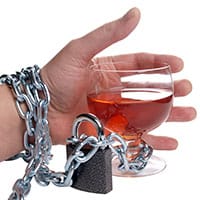Anyone who is old enough to remember the 1960s and the 1970s is likely to be amazed at how much attitudes about drinking and driving have changed over the past few decades. As hard as it may be to believe for those who are too young to remember, back then drinking and driving was an accepted fact of life. While people may have had a vague awareness that it was a dangerous thing to do, the kind of stigma that is now attached to this activity did not exist in those days. The possibility of dying in a car accident was seen as an unavoidable risk of modern existence, and this idea was accepted with such complacency and fatalism that it almost seemed as if people didn’t even notice the role that alcohol was playing in a high percentage of fatal automobile crashes. Of course, the legal penalties for drunk driving offenses were nowhere near as severe as they are now either, which helped to reinforce the attitude that driving under the influence of alcohol every once in awhile was really not that big of a deal. But when families are losing husbands, fathers, mothers, sons, daughters, and grandparents by the tens of thousands on a yearly basis thanks to impaired drivers who had been consuming mind-altering intoxicants before getting behind the wheel, eventually someone is going to notice what is going on. Increased public awareness of the death and dismemberment toll associated with drinking and driving was probably the key factor that helped to change public attitudes about this practice, and few would dispute that the organization Mothers Against Drunk Driving (MADD) deserves a lot of the credit for bringing the issue of drunk driving to the forefront of our collective consciousness. Founded in 1980 by a California woman whose thirteen-year old daughter was killed in an alcohol-related hit-and-run accident, MADD’s highly personalized campaigns put a human face on the suffering that drinking and driving was causing, and the anti-drunk driving crusade that they essentially started eventually became such a politically popular cause that it made legislative action all but inevitable. Over the past three decades, as the social and cultural acceptability of drunk driving has been declining, states have been passing more and more laws mandating stricter punishments for those caught driving under the influence. These new legal sanctions have included longer jail sentences, larger fines, more frequent license revocations, and court-ordered counseling and/or attendance at Alcoholics Anonymous meetings. All fifty states have now lowered the legal blood-alcohol limit from .10 to .08, and zero tolerance laws making it illegal for those under the age of twenty-one (the legal drinking age) to drive with any trace of alcohol in their systems have now become standard. But according to official statistics released by the National Highway Traffic Safety Administration, in 2010 more than 10,000 Americans lost their lives in alcohol-related motor vehicle accidents, and in 67 percent of those crashes at least one of the drivers involved had a blood-alcohol level above the .08 legal limit. Granted, the number of people who die in alcohol-related traffic accidents has declined by about 50 percent over the last three decades, but we are still talking about thousands of families losing loved ones each year on the roadways of America-all in accidents that could have been prevented. So while it is true that a social stigma is now attached to drunk driving that did not exist thirty years ago, just because something becomes stigmatized does not necessarily mean that people will stop doing it, and despite the social unacceptability, it is clear that hundreds of thousands (if not millions) of Americans are still driving under the influence of alcohol at least every once in awhile.
Where Do We Go From Here?
For the most part, the deterrence-through-harsher-punishment strategy that lies behind tougher drunk driving laws may have reached the point of diminishing returns. However, one change that might still be able to make a difference would be a further lowering of the legal blood-alcohol limit. Research has shown that impairment serious enough to impact basic driving skills begins to manifest at blood-alcohol levels of .05, which could explain why one-third of all alcohol-related accidents do not involve a driver who was actually over the current legal limits at the time of the crash. So lowering the blood-alcohol level to .05 has a legitimate justification from a safety standpoint, and it might also have a chilling effect on drivers who in the past would have felt that it was okay to get behind the wheel when they were not certain whether or not they were really intoxicated. Under .05, the standard of legality would essentially change from intoxicated to impaired, making it much less likely that those who have been imbibing moderately would be willing to take a chance on driving knowing they could easily fail a breathalyzer test if they should happen to be pulled over. While education and negative publicity have helped reduce rates of drunk driving in general, one area where much more needs to be done is with teen drivers. Car accidents are the number one killer of those between the ages of fifteen and twenty, and 60 percent of those crashes involve alcohol. The youth culture of drinking and driving seems to be somewhat immune to the campaigns that have worked so well to reduce levels of drunk driving among the adult population, so a new approach that engages young people more directly in the process of consciousness raising would seem to be called for. Since young people will almost automatically rebel against anything that makes it seem like they are being preached to, getting young people who lost friends or have been permanently disabled in alcohol-related crashes to speak to their peers about the realities of mixing drinking and driving would likely have the best results.
Addiction Treatment as Preventive Medicine
Significant progress has been made over the past three decades in reducing the overall levels of drunk driving in the United States. But when evaluating the reasons for the fact that so many accidents still involve alcohol, one thing that should not be overlooked is the connection between drinking and driving and addiction. While exact numbers are difficult to calculate, estimates are that somewhere between 30 percent and 75 percent of all intoxicated drivers involved in car crashes have substance abuse problems serious enough to require treatment, which clearly demonstrates that addiction is one of the hidden reasons behind the continuing epidemic of drunk driving. While those who are addicted may not deserve our sympathy when they choose to get behind the wheel after drinking or using, from a preventive standpoint, expanding the availability of substance abuse treatment and rehabilitation opportunities for those in need would doubtless have a positive effect on the DUI casualty rate.




